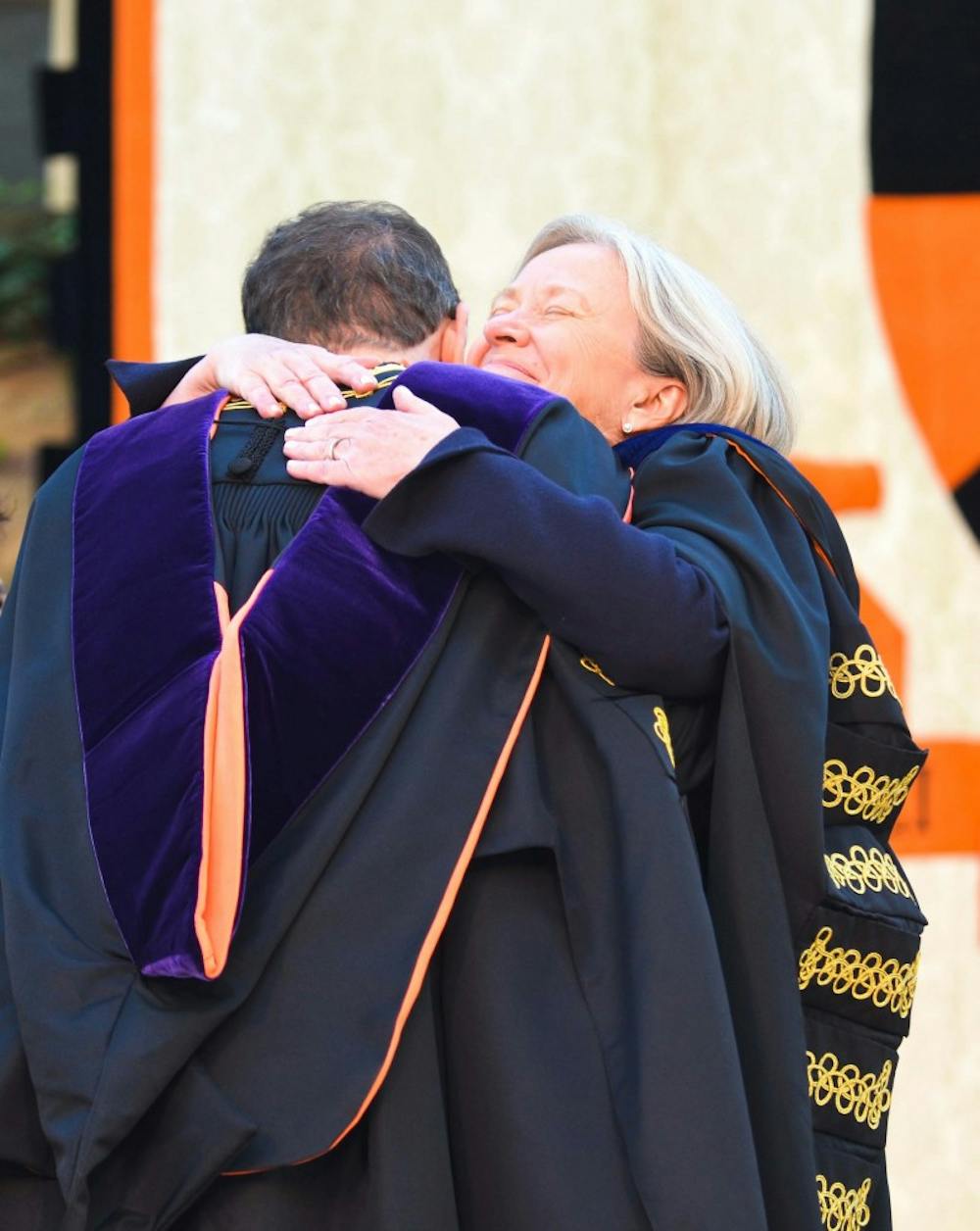 University President Christopher Eisgruber ’83 has begun to set an ambitious agenda for his term as the months wind down through his first academic year in office.He has, for example, announced a review of the grade deflation policy, suggested that the University will look into reversing its policy on accepting student transfers,and hinted at a potential expansion of the student body that could accompany a new residential college or an expansion of Forbes College.
University President Christopher Eisgruber ’83 has begun to set an ambitious agenda for his term as the months wind down through his first academic year in office.He has, for example, announced a review of the grade deflation policy, suggested that the University will look into reversing its policy on accepting student transfers,and hinted at a potential expansion of the student body that could accompany a new residential college or an expansion of Forbes College.
Eisgruber’s agenda, set so early in his presidency, is in contrast to the agenda set by his predecessor, former University President Shirley Tilghman early in her term. While Eisgruber has set an agenda filled with several high profile issues, Tilghman did not initially tackle big topics.
Tilghman acknowledged in an interview that Eisgruber has begun dealing with major University issues much earlier than she had, attributing it largely to his long tenure as provost before becoming president. While Tilghman came to the presidency as a molecular biology professor with little experience with the inner workings of the administration, Eisgruber’s prior work as a top-level administrator has given him an easier time transitioning into the role of president.
“I think President Eisgruber is in a much stronger initial position because of his role as provost for nine years before becoming president,” Tilghman said.
Eisgruber also said that his time as provost gave him an advantageous familiarity with University-wide issues, issues that he would later look to tackle as president. He noted as examples some endeavors, such as Tilghman’s focus on promoting the arts, that he worked on heavily as provost and that he continues to support as president.
“There were a lot of the parts of the job that were familiar to me from my administrative experience beforehand,” Eisgruber noted.
When comparing the early presidencies of Eisgruber and Tilghman, it is also impossible to overlook the impact of the September 11 attacks that occurred one day before Tilghman’s first semester as president began.

“What a life-changing experience it was to live through 9/11 and to be responsible for a large community here in Princeton who were very touched personally by what happened,” Tilghman said.
The early part of Tilghman’s term was marked by news about terrorism and the war in Afghanistan. To complicate matters further, a high profile anthrax attack attempt was found to have originated close to Princeton. Financially, Tilghman had to confront a lackluster economy almost immediately upon taking office, and this fiscal weakness would continue throughout the course of her presidency.
Eisgruber has not had to deal with such crises during the opening of his presidency, which may have helped him to transition more easily into the role of president without external pressure.
Despite these differences, both Eisgruber and Tilghman began their presidencies by focusing on potential student body expansiona. For Tilghman, the early plans to expand the student body, which eventually resulted in the building of Whitman College, had already been formulated by the prior administration. For Eisgruber, the question of student body expansion is one that University administrators should always be asking.

“Given the extraordinary character of the benefits we provide to every student who goes here, and given that we’re taking a smaller percentage of students than at any point in our history, we have an obligation to be asking ourselves when it is that Princeton would next be able to expand its undergraduate student body,” Eisgruber said.
Another challenge both Eisgruber and Tilghman have dealt with at the start of their presidencies was high turnover among upper-level administrators. Four deans, three vice presidents and the University’s general counsel departed during Tilghman’s first one hundred days. Like Tilghman, Eisgruber has dealt with a significant number of top administrators stepping down from their positions, including Dean of the Faculty David Dobkin and Dean of the Graduate School William Russel.
Tilghman noted that such attrition was not surpising to her, adding that it is quite common for top administrators to leave when a regime change happens at the top. Though she noted that it was certainly difficult to replace such crucial leaders from the previous administration, she said she approached the task as a chance to form a new, dynamic team.
“I saw it as an opportunity to build a team, a team that would mesh well with one another where we were not all thinking exactly the same,” Tilghman said.
Eisgruber, too, expected such attrition as a natural part of leadership change, and said he sees recruiting fresh talent to replace these key University leaders as a critical part of his first moves as president. To this end, Eisgruber has looked to Tilghman’s administrative team as an ideal toward which to strive.
“One of the things at the forefront of my mind is to be able to put together a group of people who will have the same kind of ... dedication to the values of this institution that Shirley’s team had,” Eisgruber said.
Despite Tilghman’s relative unfamiliarity with the administration prior to taking on the role, she left behind a University significantly different from the one she inherited. It remains to be seen if Eisgruber will do the same, but if the active beginning of his administration is any indication, the University certainly seems to be weighing much potential change.








